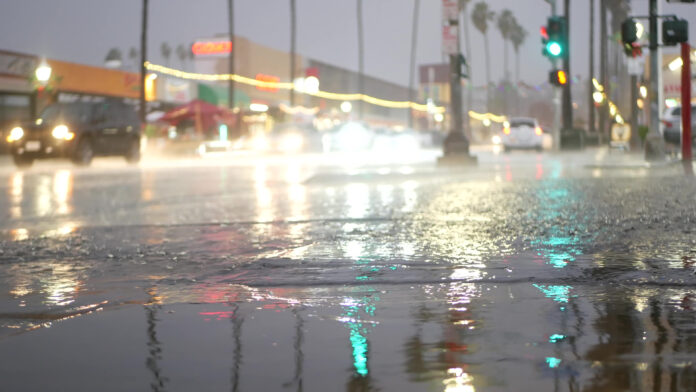California’s latest atmospheric river is badly needed, as snowpack levels remain unseasonably low despite the recent storms.d
A slew of atmospheric rivers have made landfall in the state since the beginning of February, bringing heavy rainfall and snow in higher areas. However, despite the increase in precipitation, snowpack levels in the surrounding mountains are still below average for this time of year.
Atmospheric rivers are flows of concentrated, tropical moisture that travel through the atmosphere. They transport moisture from the equator toward the North and South poles, and when it’s released the result is a deluge of precipitation.
Bin Guan, an atmospheric scientist at the Joint Institute for Regional Earth System Science and Engineering, which is a collaboration between the University of California, Los Angeles, and NASA’s Jet Propulsion Laboratory, led a study last year that ranked atmospheric rivers and their intensity.
He said that the most recent atmospheric river to hit the state was actually quite a weak one and ranks the lowest on the atmospheric river severity scale. Even so, it should help snowpack levels.
DogoraSun/Getty
“Even a weak one helps, as the statewide snow level is still about 30 percent below normal as of today and we have only a month left to potentially catch up,” Guan told Newsweek.
The snowpack in California is vital for the state’s water supply. The snow that builds in the Sierra Nevada turns into meltwater when the weather warms, which gradually feeds into the state’s rivers and reservoirs.
Last year, the state saw a series of intense atmospheric rivers that caused a historic amount of rainfall. There was so much rain and snow that a record amount of snowpack accumulated in the mountains. This caused many of the state’s reservoirs to reach full capacity, which was greatly needed since the state had just emerged from a prolonged period of drought and lakes were at extremely low levels.
This year, Guan said, the atmospheric rivers are “close to normal” in terms of “frequency of occurrences.”
“A number of those occurred in a pattern that we call atmospheric river families, a series of events that closely follow one another,” Guan said. “We have research underway that aims to understand why atmospheric river families happen and what conditions tend to make them more frequent.”
Previous studies have found that atmospheric rivers will likely increase as climate change worsens. They could also become more severe. This is why being able to predict them and rank their severity is essential as they worsen.
“It’s hard to say quantitatively until I update our global atmospheric rivers database for the current year,” Guan said. “We did have a strong event—likely AR5, the highest rank on the AR scale—that occurred in the Eastern U.S. earlier this winter.
“We’re definitely starting to pay more attention to regions beyond the West Coast when we talk about atmospheric rivers,” he said.
Do you have a tip on a science story that Newsweek should be covering? Do you have a question about atmospheric rivers? Let us know via [email protected].
Uncommon Knowledge
Newsweek is committed to challenging conventional wisdom and finding connections in the search for common ground.
Newsweek is committed to challenging conventional wisdom and finding connections in the search for common ground.


